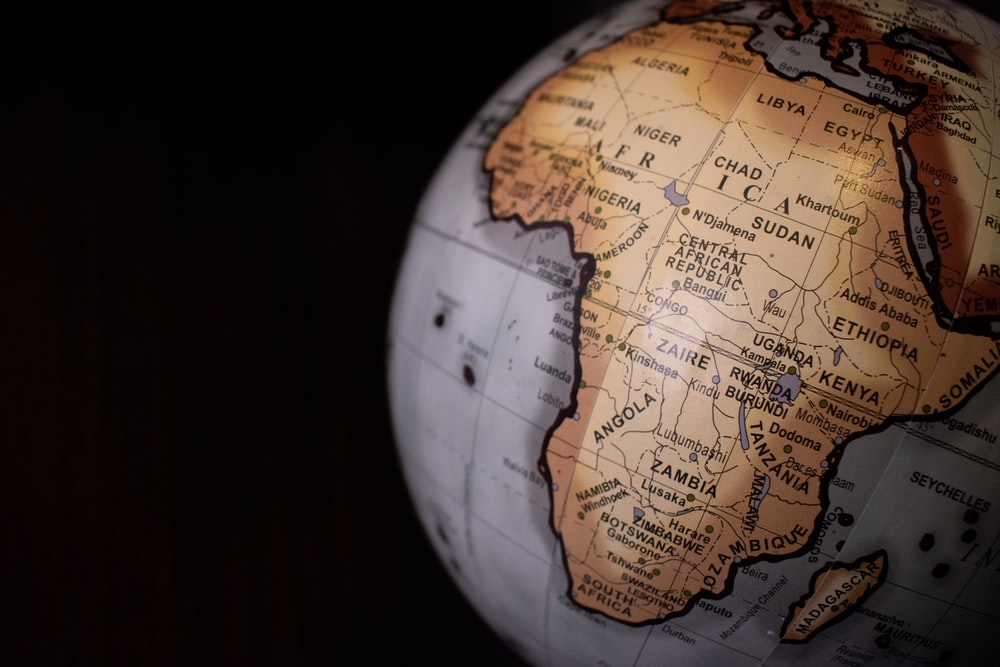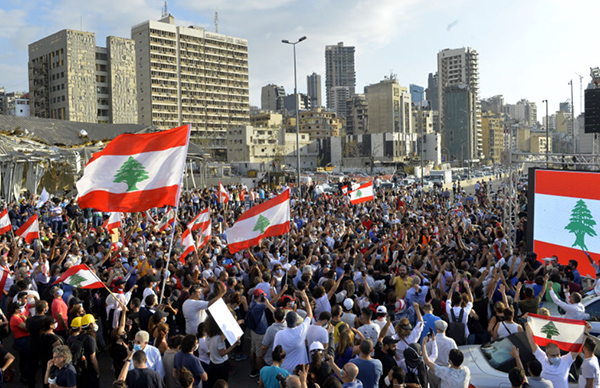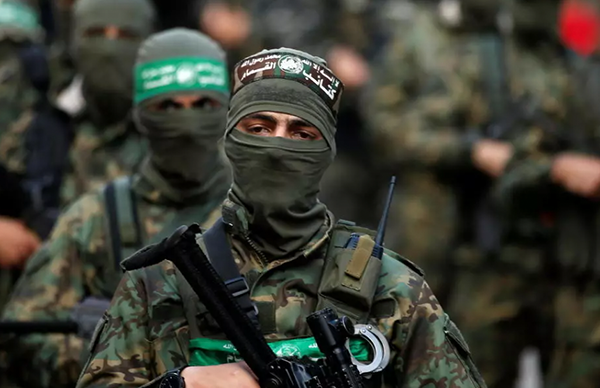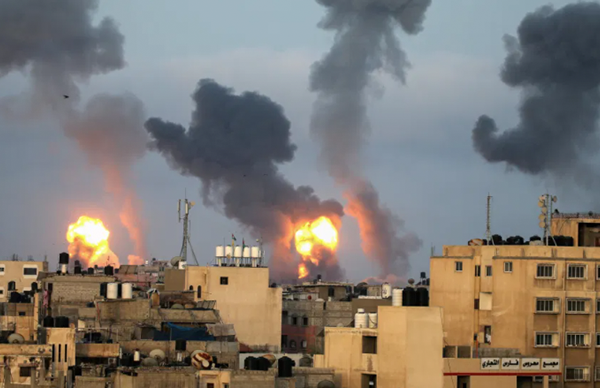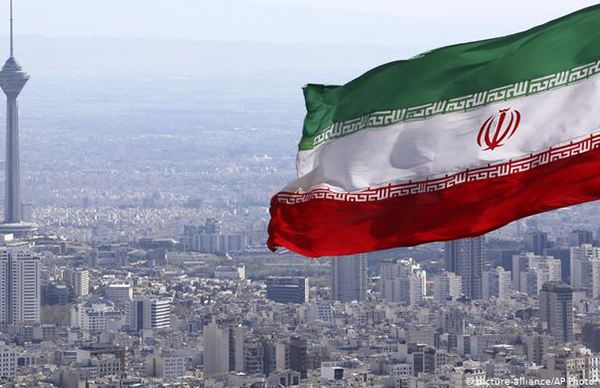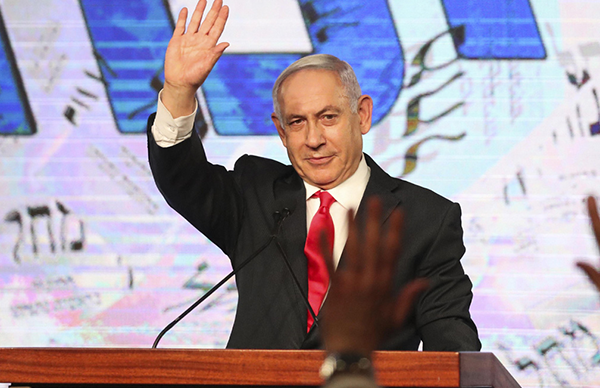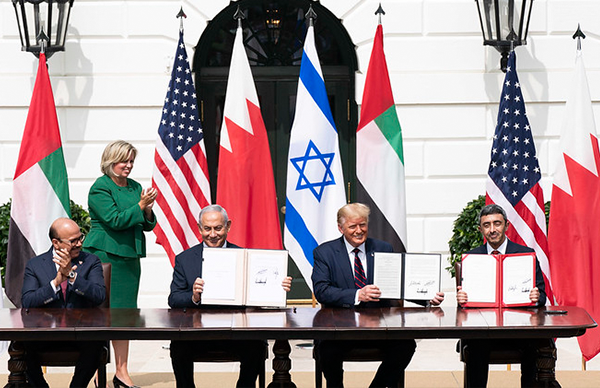By David Wurmser
The current supply chain crisis is largely anchored to faltering transport and port services. We will get over the problems as little more than temporary disruptions caused by various market forces and government missteps. But while this crisis will pass, it is a wake-up call for a much greater and dangerous crisis emerging that touches upon both the supply chain of raw materials and the supply chain of innovation over the long run. The more profoundly menacing specter of this crisis results from deep distortions, many of which are strategically threatening and some of which are intentionally encouraged by our adversaries as part of an organized attempt to weaken us. Unless, as a nation, we urgently and resolutely address our supply chain frailties and dependencies resulting from these distortions, our way of life and wealth will not survive the coming supply chain crisis. Moreover, the supply chain crisis is not an isolated failure. The vulnerability into which we have navigated ourselves itself reflects a far deeper crisis in the cultural fiber of the nation, the identification and repair of which is necessary as a first step.
The problem
The structure of securing a reliable supply of critical raw materials for US industry, civilian as well as defense, has been largely neglected since the end of the Cold War. There has been no overarching government strategy document or structure that seeks to understand the cultural and industrial foundations of American strength or mobilizes the breadth of US governmental resources to properly husband the production and supply of critical raw materials. Nor has a policy been set which governs the interactions with the private sector and the citizenry that builds upon deep cultural values and characteristics that can be enlisted to help protect and elevate our national strength.
Moreover, the absence of a crisp, guiding strategic document has allowed the US government to stumble into swelling the mass of procedures, regulations and incentives to such an extent that it both suffocates innovation and offshores our production and supply chains. The result has been greater reliance for raw materials – not only for the high-tech sector, but even for such basic sectors as food supply — in ways that that carry significant political risk and force dependence on inimical powers to whom also a great wealth transfer is occurring.
Along with dependence and wealth transfer comes the surrender of basic industrial knowledge to mine and produce these materials. This latter failure guarantees that even when the West wakes from its strategic slumber in this regard, it may lack the human capital and skills necessary to restore its own industrial supply line. This should concern both sides of the political spectrum since both green technologies and defense industries rely extensively on a growing list of materials that are mined and produced in undependable or hostile areas.
The underlying cause of this national crisis affecting industry from raw materials supply to research may run quite deep, the repair of which is a prerequisite for reinvigorating and solidifying the entire industrial continuum but will require great leadership and vision.
Underneath the many proximate causes may lie the long-term consequence of the pessimism held by our elites in the supremacy of the values and philosophical foundations of America’s founders. That pessimism has crept silently even into the boardroom and now infuses industry, which increasingly does not see its interests tied umbilically to the national interest. And it has led our elites to attempt through increasingly aggressive dictates to reshape what they believe is the “flawed” national soul rather than draft national policies and issue strategic documents that confirm our traditional national spirit and seek to leverage it to elevated goals.
So too with supply chains of raw materials, the shape and incentivization of which are increasingly subject to serve and express these top-down ideological dictates rather than elevate our deeply-held, culturally-generated national aspirations. Thus, our elites in almost every sector now do as much to douse our national energy and creativity in an attempt to redirect and reinvent it rather than invigorate and stimulate it. As such, the early indications of how we will respond to our raw materials supply chain crisis (which is distinct from the more acute port and transport supply chain crisis seizing current headlines) suggests the malaise will even further deepen.
How the US traditionally addressed the issue
In the late 1940s, the United States government set out under the lead of Paul Nitze at the State Department’s Policy Planning bureau to develop an overarching strategic plan to govern the prosecution of the Cold War. The result was the NSC-68 document.
This document, originated in a philosophical discourse sent from the US Embassy in Moscow by Ambassador George Kennan in 1946 (republished without authorization as “The Sources of Soviet Conduct” in Foreign Affairs in 1947 under the pseudonym “X”). Kennan’s analysis of Soviet hostility clarified for the political leadership in Washington that further attempts at accommodation and condominium with the Soviet Union were futile, and that a strategy was needed to answer the Soviet challenge. In other words, it clearly defined the threat against which an industrial policy would need to be defined.
Secretary of State Dean Acheson and President Truman entrusted to Paul Nitze the task of crafting such a strategy. He interpreted Kennan’s analysis and the subsequent behavior of the Soviets in eastern and central Europe to suggest that the United States was locked in a twilight struggle propelled by two hostile and irreconcilable systems of ideological organization from which only one power will eventually emerge. As a result, Nitze believed the United States had to mobilize its power fully – essentially as a continuation of its vast mobilization during World War II – to secure the victory of freedom over communism.
Paul Nitze had been one of the primary authors of the US Strategic Bombing Survey, which analyzed how effective the United States’ strategic bombing of German and Japanese industry actually was during World War II. The authors of that report had concluded that it actually was a more modest contribution to victory than assumed, which led Nitze to believe that a vast nuclear strike against Soviet industrial capacity would not necessarily paralyze them and lead to immediate defeat. There was no “silver bullet” attack which would so paralyze Russia that it would cease to exist. As such, Nitze concluded the United States had to mobilize its industrial, human and moral power as extensively as possible to arm, fight and win decisively and totally the prolonged conventional war he expected with the Soviet Union. NSC-68, thus, was the plan to organize the United States to prepare for fighting and winning this expected war. A bit later President Eisenhower convened a reexamination, called Project Solarium, which produced NSC-162/2 (1953). NSC 162/2 basically updated and expanded NSC 68.
As part of this effort, these documents defined:
• The critical values of the nation which need to be protected, nurtured and leveraged to secure national greatness and serve as a foundation for military and industrial policy.
• The vital industries not only for both civilian and defense supremacy, but also to maintain our way of life, the resources (including capital, labor and raw materials) necessary to supply and fuel industry, the geographies in which critical materials and industrial activity was located, and the attending military structures that will be needed to protect the supply chains from soil to product. In other words, it provided a framework for prioritizing, without which any industrial mobilization plan would be haphazard and ineffective.
• And then, in a loop, what sort of industries, talent and labor, raw materials, and logistical lines are necessary to maintain the required military structure and deployment?
The United States thus entered the Cold War not only aware of its national character, values, and vital interests, but with confidence in those values and a plan to mobilize and leverage the power and strengths of the United States in a way to define priorities and bring order, unity and coordination between the branches of the US government and private industry.
Since 1989, however, the United States has lacked a similar, new strategic plan, although many of the bureaus, agencies and activities which came into being as a result of these documents continue to exist.
Cultural influences propelling American self-reliance and logistical security
Culturally, Americans reject the more cynical European view that Great Powers rise and fall organically, and that some force of history or logic of over-extension guarantees the decline of America – ideas made popular in the 1980s by Paul Kennedy in his seminal work, The Rise and Fall of Great Powers. Kennedy’s title was a play on the great 18th century work of Sir Edward Gibbon, the Decline and Fall of the Roman Empire, but his conclusion was diametrically opposed to Gibbon’s. Building on the works of Suetonius, Livy and Machiavelli, Gibbon described the moral decay of Rome and how Rome’s residually immense power had obscured this decay for several centuries. Gibbon rejected the idea that inherent limits on power led to Roman decline and collapse, and indeed argued that it was decay itself, hidden by surplus power, that was at fault. Every educated young American read Sir Gibbon’s work – with their outlook being either influenced or confirmed by its conclusions — with the purpose of comparing America to Rome to identify the key inflection points toward failure, thus allowing America to consciously turn away to avoid a similar demise. Until the latter 20th century, Americans saw greatness as a function of choice and the preservation of civic virtue and thus viewed national weakness not as a given condition, but as a key measure — really an early indicator — of its moral solidity.
At the heart of the concept of civic virtue was the model of the early Roman leader Cincinnatus, who repeatedly relinquished power to return to his humble origins at the farm. Cincinnatus embodied agrarian virtue, including self-reliance and humility. While America was one of the earliest to industrialize, Americans culturally translated the agrarian virtues embodied by Cincinnatus into industrial policy.
In this context, two aspects of Rome suggested itself to Americans in these analyses as an indicator of decline. First, Christianity – and with it a new concept of civic virtue – failed to define the residual elites of Western Rome, and thus set the stage for its collapse in the 5th century (as opposed to eastern Rome, which survived another millennium). Second, Rome’s industrial strength, roads, and ownership of the Mediterranean were legend. The rise of Rome’s geographically specialized but diffused industries allowed for great efficiency and technological advance in production. And yet, Rome became reliant on far flung minions to secure the diffused activity and thus exposed its critical supply chains to the point at which it threatened its industrial structure with a potentially precipitous collapse if compromised. It was a symbol of how far Rome had come in 500 years since Cincinnatus by the 1st century; it had arrogantly assumed the permanence of its power and ignored the guiding agrarian principle of localized self-reliance. Along with the erosion of family and social structures prior to the rise of Christianity as the official imperial religion, the excessive reliance on such regional specialization and overconfidence in maintaining logistical lines of trade and communication were seen as fatal flaws reflecting the decline in civic virtue.
For Rome, that threat came not only in the 5th century with the political fall of Rome to barbarians, but also in the 8th century with the collapse of western Roman civilization itself (largely adopted by the barbarians). To note, eastern Rome otherwise capped a four-century thriving resurrection of Roman power and life which in the traditional American view was caused by the rise of Christianity and survived until other European powers gutted it and left it fatally wounded a millennium later during the Crusades. Indeed, in traditional American writings, despite the rise of personal virtue with the spread of Christianity prior to the 8th century, the continued failure to internalize the decay of the agrarian virtue of self-reliance and the continued arrogance of assuming permanently Rome’s superior power led to the far more catastrophic loss of the 8th century compared to 5th. Talent and specialized production centers were overrun or decayed because their supply lines were cut and their geography relegated to the edge of the Empire. As a result, real knowledge was lost. It took the Florentine architect Brunelleschi well until the 15th century to rediscover the cement and architectural secrets of Rome which had been used to build the Pantheon. 1 The renaissance itself picked up essentially where Rome had left off in the early 8th century.
The lesson was clear and had been baked into the American cultural DNA for three centuries: The agrarian virtue of self-reliance – which in the American imagination applied ultimately to industry rather than just agriculture — had been compromised by Rome. Were America to do the same, then it too would go the way of Rome.
A new Rome?
Today, moving goods, specializing production, and outsourcing talent is easy, cheap and efficient – perhaps more so than any time in history. But absent a strategic framework and vision to guide and temper it, unfiltered considerations of cost and marginal utility reign unhampered, regardless of the ensuing vulnerabilities or moral failings. Comfort, specialization and crude cost calculations crowd out many other long-term important strategic considerations, akin to what happened to Rome in its last century.
The Trump administration – aware that many of our supply chains pass through China – initiated a far-reaching examination under an executive order (13806) from 2018 to examine our supply chain vulnerabilities. The resulting report was called Assessing and Strengthening the Manufacturing and Defense Industrial Base and Supply Chain Resiliency of the United States (released October 2018). 2 The new Biden administration in February 2021 ordered an update of the study, commenced by the previous administration and issued its findings in a June 2021 report under Executive Order 14017. EO 14017 outlined the problem, and the underlying industrial habits that led to it:
“Our private sector and public policy approach to domestic production, which for years, prioritized efficiency and low costs over security, sustainability and resilience, has resulted in the supply chain risks identified in this report.”
These reports are important and well done, and credit goes to both administrations, President Trump’s for initiating the first and President Biden’s for following through on the second EO, but both reports are insufficient:
• They focus almost exclusively on high-tech and defense industrial activity. But a broad-based strategic policy must also look at the security of food supply and other less glamourous things.
• They are not ambitious enough. Their analyses are based on existing supply chains and technologies. While it scratches at the idea of cutting-edge research, it does not extrapolate what might arise in terms of demand and then build the mechanisms for a government wide effort at coordination.
• In failing to examine the ideas and cultural patterns that have made America a great nation, the reports do not address the underlying causes that led to both stifling national vitality and leading to the emerging raw material (and innovation) crisis.
• They report stovepipe industries and sectors. A strategic plan needs to view every sector in one fluid picture.
• They do not even come close to the breadth of NSC 68 or NSC 162/2, nor do they seek to, in examining the philosophy and resulting essence of the United States and of its adversary (which at this point must be considered China) to establish the existence of a strategic competition with unique characteristics. They neither outline the foundations of our and our adversary’s industrial, let alone military, strength, nor survey the geographic ramifications of that. As such, EOs 13806 and 14017 are not deliberate plans to organize the United States into a broad-based strategic competition. They are only descriptive situation reports, although alarming ones.
The new administration has set up a task force – the Supply Chain Disruption Task Force – with cabinet-level firepower in June, presumptively as a result of EO 14017, but it still lacks an overarching strategy, let alone strategic document, to serve as the foundation for informing and organizing the effort. As such, it will likely remain a reactive committee – addressing already acute, politically-loaded failures rather than planning far ahead for them – and thus continues to fail to provide a proactive strategic framework.
Such supply chain issues concern our allies too. The EU commission issued a report in 2020, Critical Raw Materials for Strategic Technologies and Sectors in the EU, which as its title suggests reviewed the vulnerabilities of its own supply chain. While it is an ambitious and also impressive report and does have some elements of strategic mobilization, it is limited to the high-tech sector and focuses greatly on non-defense, much more “green” technologies, including batteries.
Still, the precedent of NSC-68 and Solarium, and some of the insights from EO 14017, as well as the EU Commission’s report on raw materials, helps us focus on a number of principles that work against the purely cost-cutting and efficiency-based ethos of current business practice against which EO 14017 warned above.
Practical, strategic and moral considerations
We have diminished the value of proximity. There is great utility and protection in prioritizing keeping segments of the supply chain as close to each other as practical. Currently, Elon Musk is building a new Tesla factory in Germany. Tesla automobiles, using batteries, rely on a robust supply of phosphates and lithium. Musk’s current supply of phosphates comes from Morocco or China, rather than Norway (which has large phosphate deposits) and is thus vulnerable to all sorts of disturbance and interference. Damaging, let alone severing, this one international supply link could potentially paralyze the industry. If, on the other hand, the mine and the factory are very close, even co-located in a friendly country, then damage is limited. It is obvious that having the bulk of our Phosphates come from Western Sahara and our Vanadium (used to reinforce steel for hundreds of different applications from armor to car frames) from China and Russia rather than from such a good ally as Norway (in which both elements are present) is a problem.
Ultimately, this is not only about stability of supply. While rare earth and critical raw materials need to be protected from political risks, their supply structure should also align with national strategic and moral imperatives. Supply chains should only be preferred in nations with shared values, even if costs are higher. As EO 14017 notes, the strong imperative of cheap production costs has established dominant patterns of supply and trade in which companies have turned to questionable suppliers of labor and raw materials – such as slave and child labor, organized crime, conflict spoils – to reduce costs. Some on the left have taken the initiative to boycott certain companies to pressure them to consider the social costs. The problems with their taking the lead are great, however. These organizations quite bluntly do not share the values of the United States. Indeed, their values drive a highly selective assault on key US allies, often informed by a concern to harass or even paralyze key allies as part of a larger attempt to strategically weaken the United States. The Boycott, Divest and Sanction (BDS) against Israel is one such example.
Moreover, so much urgency is currently attached to green energy that it overpowers due diligence. Western extraction standards in mines can be strict, expensive and by necessity will involve the compromise of beautiful areas of nature. But green products need both materials and energy and will drive demand for raw materials with cost pressures favoring lower cost supply chains. While the end use product may easily appear green, the value-added supply chain thus is neither green nor moral. Nor is the occurrence of this obvious at times. China, for example, is exporting not only raw materials, but it is producing and exporting further up the value-added chain. In doing so, it obscures, even hides, the sourcing of the raw material. So strategic policy, business and government intelligence, and economic efficiency needs to be in alignment to ensure thorough due diligence and a truly green and moral policy. As bad as a mine in Norway may be environmentally, it will be done in a far more responsible and environmentally friendly manner than a Chinese mine. Similarly, there is no zero-emissions car on the market. A fully electric car still needs to be charged with electricity that comes from a power plant, the increased demand for the construction of which is in part the result of increased electric car energy demands. These shifted and hidden costs need to be factored in honestly, but often are not.
The decline of US critical material stockpiles and supply structure
Sadly, the problem is deeper – and far more troubling — than just distasteful supply chains. We in the US have been ramping down our strategic planning in all matters connected to the supply chain. The Defense Logistics Agency Strategic Materials (DLA SM) reports on strategic and critical material markets in Strategic and Critical Materials 2021 Report on Stockpile Requirements. The report has annually offered detailed insights into the supply and demand market conditions of strategic and critical materials, and highlighted relevant dependencies and potential choke points and bottlenecks under national emergency conditions. Unfortunately, the 2021 report was the final edition, due to the repeal of this reporting requirement this year. 3
The Non-Availability of Domestic Supplies Stockpile (NDS) is designed to stockpile materials vital to our national security. The NDS liquidated many of its stockpiles during the post-Cold War sell-off, and it will shortly reduce its NDS Transaction Fund – the fund used to purchase raw materials — to near zero by 2024. For example, the Department of Commerce recently investigated titanium sponge supply under Section 232 of The Trade Expansion Act of 1962 and noted that the NDS had liquidated its stocks of titanium sponge entirely. The US Department of the Interior named titanium as one of the 35 most critical raw materials. It used from the defense sector to electric vehicle manufacturers, as well as highly specialized industries such as aerospace.4 While the interagency Titanium Sponge Working Group is figuring out now how to rebuild the Titanium supply chain, including new stockpile purchases, it is largely increasing its stocks of titanium only by recycling it from end-of-life weapon systems.5 The US no longer has a significant titanium mining capability, and thus relies on imports almost entirely from China and Russia.6
Moreover, the NDS completely disconnects defense from civilian infrastructure on this in the US. But in the end, the NDS is a strategic, not economic stockpile.7 It is designed to offset supply chain risks to defense and essential civilian industry for a national emergency event, and not to guarantee the continued smooth production of American industry.
In contrast, China does have a national strategy, and it has established the relevant bureaus similar to the NDS. However, in China’s case, these bureaus deal with both the civilian and military structures as one whole (which in China is a better way to view its industrial structures anyway) to guide its polices on such critical materials. As EO 14017 notes, the State Reserve Bureau is an economic stockpile and is more interventionist in markets, actively combatting price volatility or supporting particular industry segments.
A similar story can be told about the Defense Federal Acquisition Regulation Supplement (DFARS). The DFARS is an approval structure that qualifies friendly countries to enter into reciprocal defense procurement agreements with the United States to remove barriers to the purchase of supplies. We have so greatly complicated this activity – that it has for all practical purposes been limited still to just Japan and Australia essentially — while China has pushed ahead with its program, called GoOut China. 8
Returning for a moment to the titanium supply conundrum, China and Russia hold a near monopoly on the mining of the element.9 The Norge mine in Norway holds large deposits of titanium (along with vanadium and phosphate), but the failure to expand DFARS (along with imposing higher import tariffs on non-DFARS nations) to strategic allies can easily hamper tapping into this resource to replenish US stockpiles in this critical raw material.10 Another similar story could be told about vanadium, which is critical for armor and other uses for greatly hardened metals such as high-speed tools. It may also be a critical element in future battery production. And yet, about 98% of all the world’s vanadium comes from Russia, China and South Africa. Fortunately, the Norge mine holds a lot of that element too, but unless DFARS is updated and includes preferential import regulations and taxes to favor our allies over our adversaries, that too may remain inaccessible or competitively too costly to US industries. 11
Energy storage as a critical raw material
NSC 68 and 162/2 spent much ink on identifying key industrial areas, reviewing which of those areas the Soviets already possessed and which we still possessed and needed to ensure remain in Western hands, and finally which areas are up for grabs. Moreover, the fuel that breathed life into these industrial areas – hydrocarbons – were also identified as a critical and thus considerable similar analysis was done in these reports about the need to secure their geographic locations, particularly in the Middle East (leading to one of the first confrontations of the Cold War in Iran, even before NSC 68).
But there has been great industrial change since 1945. The new economy is still driven by the need for energy, although its form is changing in revolutionary ways. While new forms of energy production are still not yet fully economical – so hydrocarbons in one form or another will continue to be important long into the future – there has been a revolution in energy storage, namely battery technology, which in turn has revolutionized production, transport, communication and consumption. These changes drive a great increase in the need for several critical raw materials, such as phosphates and lithium. Currently, the world’s phosphates – which are also a vital part of the food chain since they are critical to fertilizers — come almost entirely from Western Sahara, China and Russia. Any disruption of phosphate can leave the world starving while it sits in powerless electric cars unable to call friends to complain on battery-less phones.
The European Union may be ahead of the United States on this. The EU Commission report on raw materials and new technologies identifies and extrapolates currently existing technologies into as yet underappreciated directions that will revolutionize industry. Five years ago, the EU prioritized battery supply chains and established the European Battery Alliance (2017) as a community-wide strategy to secure battery manufacturing and access to critical materials across the entire supply chain. The fund behind this was established in 2019 with an initial seed of $3.5 billion to promote research and development of new-generation batteries.12 The EU expects approximately $5.5 billion in private sector investment in the region shortly, including from major private concerns, such as BASF, BMW, Opel, and Varta.
Ideas as a critical raw material
The current EU Commission report on raw materials and new technologies identifies and extrapolates currently existing technologies. And yet, some of the most strategically important changes may come from beyond existing technologies. Neither EO 14017 nor the EU Commission adequately capture this dynamic, let alone extrapolate cutting edge research which will lead to currently non-existing technologies that will radically alter or render obsolete current concepts. We need to widen the aperture.
For example, the pages of the most advanced research on quantum physics and the emerging quantum revolution contain articles on the use of neodymium in producing crystals that exhibit spiral (helical) magnetism (as opposed to polar) that arise from Weyl electrons. Neodymium is currently mined primarily in China, which produces 80% of the world’s supply, and is already used in powerful magnets found in cell phones to Toyota vehicles, but this new research adds a new and potentially revolutionary dimension.13 Neither the EU commission report on raw materials nor the US EO 14017 has thought through the implications and applications of this or other technologies that could be wedded to quantum computing advances, let alone the materials which these new advances would demand.
Research institutes, incubators and innovation centers driving basic research are the first draft of the future. A proper strategic policy would need to monitor such key centers of innovation, incubation and education to extrapolate preemptively the sorts of new supply chains they will demand and to proactively secure, explore, or protect those raw materials before others place a strangle hold on their production and export.
In terms of encouraging advanced research, the US has retained some of its capabilities, although only at the same level since the end of the Cold War. The Defense Advanced Research Projects Agency (DARPA) is a public-private cooperative structure established in 1958 to seed and stitch together the activities of universities, industrial labs, scientists, and others at the forefront of research and innovation into organized efforts to help the US defense structures stay generations ahead technologically of its adversaries. It currently has six offices (biological technology, defense sciences, information innovation, microsystems technology, strategic technology, and tactical technology) and is trying to create a seventh, quantum revolution office. DARPA was often at the forefront of developing technologies that define modern life. Al Gore not withstanding, DARPA-encouraged projects invented the digital protocols, for example, that led to the information revolution and the internet, as well as GPS and stealth technology.
DARPA’s current budget in 2021 dollars was a little over USD 3.5 billion 14 — about the amount the EU dedicated to developing their battery strategy alone — having essentially not grown (actually slightly declined) in 15 years in real terms from its 2007 budget of USD 3.3 billion. 15 While DARPA is thus far still funded at a mostly steady level, it is falling away from China, and even the EU, which are both accelerating their DARPA-like activities.
But there are two limits to DARPA. First, like the NDS, it deals with defense-related technologies only and is not mandated to help civilian industry in the United States compete with an adversary’s industry such as China’s. Our competition with China, unlike that with the Soviets, has economic dimensions; China is mobilizing its entire society to compete with us geopolitically not only in traditional terms, but in industrial terms, as well. In short, DARPA can only tangentially help US industry compete strategically with China’s, but all of China’s ostensibly private companies enjoy immense government financial and intelligence support (because Chinese industry is inherently never truly “private,” but serves as part of the national effort to prove the superiority of its system and eventually defeat the West).
Second, DARPA is not the trigger mechanism for a supply chain stockpile and protection structure. If a DARPA project suggests that a certain element is going to become critical and in high demand when these technologies reach fruition, there is no follow-on mechanism attached to the DNS or DFARS system to mobilize those agencies, nor reported in the DLA SM report – which is anyway now discontinued — to secure the supply of the element (and even if they were, it would still only be limited to defense industries). Those linkages would need the existence of an overarching national strategic doctrine, and defining document, to encourage.
New industrial geography
Moreover, the transition from an industrial economy to a high-tech driven economy has also altered the geography of industry since the 1940s. NSC 68 and 162/2 identified key industrial centers – even if they were razed by strategic bombings of 1940-45 – around the world whose control constitutes a vital strategic asset. Even destroyed, it was recognized that the retained human capital will allow these geographic areas to quickly reemerge into their former industrial centrality. As such, it defined the geography of American strategic interests around those centers.
And yet, the rapid pace of developments and application of research into ideas that define and drive new products has economically essentially levelled the playing field, allowing new players to become vital centers of industrial importance which were marginal or even non-existent in 1950. In the 1940s, industrial capacity was defined through vast structures of development, supply, production, and distribution. It was almost impossible for an upstart to suddenly bootstrap itself effectively to compete with General Motors, General Electric or General Foods. Moreover, economies of scale reigned. Nations that by 1940 were not leaders in the industrial revolution faced a daunting uphill struggle to compete. And the innovations that occurred in the 1950s and 1960s and were essential to US industrial and military dominance were dominated by the US – which was within the mandate of DARPA to encourge and assist.
In contrast, the rise of the high-tech economy has given new players a chance to compete without an inherently insurmountable disadvantage. As a result, in the new post-industrial economy, entirely new geographies – out of DAPRA’s mandate — have now arisen. Nations such as Israel, Finland and Estonia have become centers of activity as vital to the West as were the major global industrial centers of 1948. So too Taiwan’s microchip production. And yet, absent a new NSC-68, there is no national strategic policy governing the consideration of protecting and ensuring those centers remain accessible and oriented toward the West as a vital national security interest. In short, though innovation is now a “critical raw material” of sorts for the US and the West, its global supply chain remains essentially without national-level strategic consideration or protection.
Finance and the diffusion of investment centers
Ideas need funding. Indeed, key investment centers are handmaidens to innovation and incubation centers.
In 1950, the focus of international finance and the generation of cutting-edge industrial innovation was so dominated by centers at the core of the West (such as New York, London, Zurich in finance, and Detroit, Seattle, Chicago, Milan and even LA and other areas in innovation) that these areas governed little attention in NSC-68 or NSC 192/2. But the location of innovation and finance has changed in the last decades, and thus so too must a strategic analysis now consider both innovation and finance/investment – and their new geographic centers — as critical raw materials of sorts. Moreover, while ideas are dependent on funding, they also eventually develop new technologies that will demand a new collection of critical raw materials.
Consider the UAE and the strategically economic implications of the Abraham Accords. Not only do they wed the financial and innovation centers of UAE and Israel together, but geopolitically, it weds the emerging eastern Mediterranean strategic area anchored to Israel and Greece with the Indian Ocean and east Asian strategic area anchored to the UAE, India and Japan. This should be conceived of as a powerful cultural and economic unity, not just military and geopolitical.
Surrendering human capital
Knowledge is not all about innovation. The West has dangerously neglected its current knowledge and human capital, namely skills. As EO 14017 notes, Western countries’ lowering of value creation and outsourcing, especially in fields like mining, has led to a rise in the atrophying of talent in key sectors in industrial nations. 16 Other US agencies have noted this as well. The Department of Defense’s Fiscal Year 2020 Industrial Capabilities Report to Congress:
“The entire U.S. critical minerals supply chain faces workforce challenges, including aging and retiring personnel and faculty; public perceptions about the nature of mining and mineral processing; and foreign competition for U.S. talent. Unless these challenges are addressed, there may not be enough qualified U.S. workers to meet domestic production needs across the entire critical minerals supply chain.” 17
In 1995 the US Bureau of Mines (USBM) was defunded. It issued educational grants and assisted university programs across the country. Slowly, the human talent developed over centuries in mining and geology is eroding. Our skilled mining workforce is aging, and youth have no incentive to enter studies that lack scholarships and are denigrated as environmentally criminal by many of their young friends and colleagues. And universities lack the moral fortitude to persist in teaching these fields if both the money is not there and the politically correct reactions are withering. By way of comparison, China has 39 universities granting mineral processing and metallurgy degrees, thousands of undergraduate and graduate students. 18
At some point in the future, the will, if not even the urgent need, will arise for the United States to reopen mines and discover new ones to compensate for the denial of critical and rare materials by our adversaries. But while the money and will may still be there, we may be unable to do so.
And mining is only an example. There are many other fields where the proclivity to outsource for reasons of cost and efficiency have essentially stripped the United States and its allies of the talent necessary to continue were there global-level disruptions. When Rome fell, the world lost a treasure of knowledge on construction and science. The West is not conquered, but it is unlearning and losing the basic skill sets that run daily life and allow for any supply chain to even exist.
Conclusion: Where is it all coming from and what to do?
Following the publication of the NSC EO 14017, the Biden administration ordered all agencies to undergo a self-review in their areas of supply chain vulnerabilities. While the verdict is still out on this effort, its beginnings raise concerns.
First, vulnerability from what? Is it a vulnerability from a hurricane hitting a coast with refineries, from a factory in France which may suffer labor shortages, or from a mine in Ohio that may suffer protests? These are temporary distortions which proper contingency plans – which are worthy of organizing — can handle. A labor stoppage threat in France does not mean that one should abandon French supply, but it does mean that a plan B should be put on the shelf to serve as an off-the-shelf stopgap.
But temporary disruptions are not the same level of threat as long-term distortions, some of which are intentionally encouraged by adversaries to strategically weaken us. Are we trying to reinforce our supply chains from acts of God or from the hostility of adversaries and the vulnerability of the denial of critical raw materials over which an adversary has a monopoly? For example, several years ago, China used a momentary dearth of investment in the high-tech health sector to try to invest enough in Israel’s health sector to distort it into patterns of research and production inappropriate for Western demand. This exposed Israel greatly to China’s bullying because so much of its health industry suddenly became beholden to China. Absent a definition of the threat and an analysis of how that threat might play out, it is difficult to anticipate and organize a response. Disruptions in supply are vastly different in terms of demanding strategic response than fundamental distortions by our adversaries. Disruptions can be handled tactically by contingency plans. Distortions require national-level strategic efforts to reverse the vulnerability before it can be exploited. Such definitions of vulnerability must come from, rather than inform, a coherent strategic framework. And such a framework defining our values, our adversary’s, and the sources of power for us and them, is currently absent. There is, in fact, no mention of supply chain monopolies run by adversaries in any of the directives to agencies tasked to examine their supply chain vulnerabilities.
Second, ordering separate agencies on their own to conduct such an investigation without coordination inherently stovepipes the problem. While each agency may identify temporary localized solutions sufficient to handle supply disruptions, the taxing of those solutions by several sectors at once may be overwhelming.
Third, the directives given the bureaus are unfocused. Take for example the June 8 government fact sheet, in which it outlined how it was going to secure our nation’s battery supply. It listed the following priorities:
• “Catalyze private capital with new federal grant programs…
• Electrify the nation’s school bus fleet…
• Accelerate the electrification of the nation’s transit bus fleet…
• Provide consumer rebates and tax incentives to spur consumer adoption of EVs…
• Invest in the production of high-capacity batteries and products that use these batteries to support good-paying, union jobs. Tax credits, lending and grants offered to businesses to produce in the U.S. must require the creation of quality jobs with the right to organize for workers… Other standards that should be included are: (1) mandated hiring percentages from registered apprenticeships and other labor or labor-management training programs, (2) project labor, community labor and local hire requirements, and (3) employer neutrality agreements.
• Develop strong environmental review permitting practices for the extraction of critical minerals. We recommend Congress develop legislation to replace outdated mining laws …These should be updated to have stronger environmental standards, up-to-date fiscal reforms, better enforcement, inspection and bonding requirements, and clear reclamation planning requirements.” 19
Of these, the first might help, depending on how it is defined and invested. The next four bullets, however, have nothing to do with securing supply chains, but they do advance ideological objectives that may actually deepen our dependence on supply chains running through China. And the last bullet is distinctly anti-mining and is likely to shut down and deeply retard our mining industry, leaving nations which have no such regulatory limitations as the only remaining suppliers of raw materials thus deepening the very dependency such an effort should be relieving.
These policy documents suggest the new administration is flailing and cannot resist mixing ideological policy preferences with economic necessities and genuine strategic vulnerabilities. The emphasis on such ideological imperatives, such as green energy and technology, union support, risks the danger of creating pressures of seeking supply without requisite due diligence. The demand that a supply of government fleet vehicles ensures both being green and secure their battery supply chain can lead to greater reliance on adversaries rather than less as agencies seek to maximize their supply sources rather than narrow them to reliable, but potentially more expensive ones.
Indeed, this comes from the top. The Biden administration set a blurry tone to its aims in its first days:
“Resilient American supply chains will revitalize and rebuild domestic manufacturing capacity, maintain America’s competitive edge in research and development, and create well-paying jobs. They will also support small businesses, promote prosperity, advance the fight against climate change, and encourage economic growth in communities of color and economically distressed areas. More resilient supply chains are secure and diverse — facilitating greater domestic production, a range of supply, built-in redundancies, adequate stockpiles, safe and secure digital networks, and a world-class American manufacturing base and workforce.” 20
This is pablum. Objectives, such as better wages, enfranchising communities of color, advancing the fight against climate change, are worthy goals that may well demand strategic prioritization, but they are not related to securing supply chains from disruption or distortion. Indeed, such aims could lead to greater reliance on questionable sources of supply. Distressed communities need cheap goods. China provides them. This increases supply chain dependence on China. The pursuit of robust supply chains will likely, in fact, cut into profits and reduce wages, make goods a bit more expensive, and might even slow growth, which is precisely why a national level framework guided by a strategic document is necessary – otherwise, businesses, who are legally bound to provide their investors with value, would do this on their own for their own financial reasons. Such choices are questions of national values and priorities, the outlines of which are absent at this time in any guiding national document. Prioritizing everything prioritizes nothing.
Clearly, the good news is that Washington is beginning to take note of the dangers of our vast dependence on supply chains over which there has been until now scant control, planning or strategic contemplation. And yet, the response has been inadequate, too laden with the danger of ideological abuse, uninformed by any guiding national and strategic vision and completely lacking in any concept or principles to define the nature of threats or identify adversaries. In short, there is no NSC 68 equivalent to guide the effort.
And indeed, the problem may be even deeper than that. There may be underlying issues affecting American culture which prevent us from thinking in these strategic terms, and unable to pursue them even if conceived.
It would, of course, be seductive for some to look to Europe and simply follow their lead. Yielding to a new international regulatory structure set by our European allies would be the easy path, and we could convince ourselves that it advances our common values and secures the supply chain that drives our economic vitality and military power. It would also be tempting to try to overpower the market and aggressively legislate American industry into compliance with these international regulations. And it would be easy to expose American businesses to international courts upholding those regulations.
The problem is that the European Union does not genuinely share our most basic values. Instead, it issues from a fundamentally different philosophical foundation from the United States. We emerged from the evolution of the Italian Renaissance, 17th century British politics and 15th-18th early enlightenment thinkers in the United Kingdom and France. The European Union in contrast, is largely animated by 18th century French philosophers, like Rousseau, and the underlying philosophy of the French Revolution. The latter believes in a population too ignorant to truly understand its self interest and “social contract” – the support of which defines the possession of citizenship and rights — and thus must be led by an enlightened vanguard leadership guiding the people to their own interests and morality. As such, embedded in this outlook traditionally lies the effort by a vanguard elite to realize the “social contract” which the general population is too informed to appreciate on its own, by launching a campaign of interventionist legislation, activist (even “legislating”) laws and courts, government regulations, international organizations, and the intertwining of business with government to the point of blurring the line that which the United States traditionally has done through public-private policy coordination and incentives and the principle of preserving inalienable personal freedoms (including the right to property). Moreover, the EU’s elites employ the governmental, legal and bureaucratic structures to execute a distorted concept of morality they believe embodies the “social contract,” and thus such interventions are not driven by purely economic or strategic considerations to secure the supply chain, but are informed by an attempt to guide Europe industrially according to elite values and not.
Second, our problem is not truly lack of regulations and administrative directives. In fact, it is the opposite. Those in the technology fields, for example, complain mightily that the United States has burdened its innovative soul with such regulatory and administrative knots and complexities that it has effectively tied the hands both of government and of the citizen alike, rather than provided a proper governmental and corporate framework for responsibility, initiative and creativity. Indeed, we suffer the sort of regulatory and administrative morass that Phillip K. Howard describes in The Rule of Nobody.
Howard argues that the US needs to return to setting national goals and boundaries that elevate our aspirations and validate our foundational values and philosophy rather than dictate public choices. Or as Michael Barone said of Howard’s argument: [his] “central insight – that ordinary Americans can be trusted to behave responsibly – is a good starting place in reforming government.” 21
Indeed, going beyond Howard’s argument, the drift toward such dictation – namely the EU way of doing things — suggests a certain disdain our elites hold regarding the virtuousness of the national soul and the aristocratic suspicion they harbor of its foundations. This assault both causes and confirms the surrender of our last vestiges of popularly-held civic virtue, since virtue is not held by citizenry but imposed on them. And if everything is imposed, regulated, or forbidden – namely controlled — then personal or corporate initiative to take control of the situation, to operate voluntarily according to a code of ethics, or to concern oneself with the public good all withers. Nobody takes responsibility for anything – which is essentially the point Howard is making. In some ways, that failing more than any other lies at the heart of why we have allowed our industrial policy altogether, to become so haphazard, vulnerable and largely unattended … and frankly pessimistic. This lies at the core of the national crisis affecting everything from supply chains to production to innovation. Nobody is in charge and our elites are unintentionally, but still collectively, allowing the nation to flounder suffering under a thousand cuts.
Indeed, this goes some way to explain the deep chasm emerging in America between the aristocratic pessimism and wistful glance toward Europe as a model which has gripped American elites – which now constitute a new rigid aristocracy of governmental and business elites — and the gritty self-confidence that grips America more popularly, especially between the coasts. For a decade now, the United States has politically experienced an anti-establishment sentiment animating both sides of the political spectrum. 22 This impulse to disruption is both necessary and useful to reinvigorating the national spirit, but without constructive leadership following, it can also be dangerous and simply destructive rather than disruptive.
At any rate, private citizens and business have on the one hand been loaded with an increasingly burdensome, non-economic mass of regulations designed to dictate new national values, while at the same time faced a decades-long assault by NGOs and non-profits to bend to increasingly ideological and unprofitable set of behaviors to advance those new national values. And yet, simultaneously on the other hand, with respect to supply chains, offshoring production, and foreign trade, business has been allowed to embrace a hyper laissez-faire attitude externally to overcome the internal regulatory environment, thus encouraging business to increase profit by aggressively offshoring and subcontracting to foreign ventures which can perform absent the sort of internal regulatory tethering domestic production entails. Together, these pressures have combined to create a business environment that forces the export of business activity abroad and essentially jettisons the very concept of civic virtue and corporate citizenship. Instead, it replaces genuine civic virtue with an imposed sort of Code Napoleon of corporate responsibility dictated by elites, activists and a self-anointed international aristocracy — and then finds rationalizations to justify the dependency on adversaries as well as the wealth and tech transfer to them they are deepening.
As such, while many dream of moving the United States toward a European foundation, culturally and philosophically the population of United States will continue to view blurring the government-business divide, government activism, mindless further bureaucratization of regulation, and surrender of personal sovereignty (including business autonomy) to self-anointed elites and international structures with great suspicion, or indeed outright hostility. As a nation, we are beginning to wheeze and stifle under the weight of the “rule of nobody” that Howard so well describes. Americans have, since long before their founding, been profoundly suspicious of top-down, elite-driven, virtue-shaping activism, such as the corporate social-justice activism now dominating Fortune-500 business. As a result, populist pressures will eventually work to sabotage any industrial policy in the United States that does not issue from a public-private partnership that builds on national values rather than a governmental or bureaucratic command to reshape them. Thus, the European approach and model to resolving such questions will remain largely inappropriate to US realities and culture.
The only way forward must start with a new NSC-68 that is a fundamental examination of our national values:
• the sources of our strength from the foundations of human and social capital and the reinvigoration of values to the supply of raw materials;
• mercilessly and unsentimentally reexamines the entire regulatory and administrative structures of the US government, code and law, unhesitatingly and without ideological prisms; and
• crisply identifies adversaries and examines the global distortions economically caused by reliance of adversarial actors, and establishes a framework of priorities, clear definitions, government programs, and popularly-convincing policy positions to signal the private sector what is expected of it.
While legislation and regulation are part of the mix – they were with NSC 68 as well – these must be the product of domestic cooperation and popular approval – namely proper legislation and statute debated and vetted by the public. They cannot be the result of some hidden commitment made by diplomats or corporate executives in the international corridors of Davos led by businessmen and activists, or businessmen-activists, decrying the evils of the very system under which they made their fortunes, such as Klaus Schwab.
Finally, even something as distant from supply chains and technology as the question of immigration needs to be revisited. The lawlessness and loss of control signaled by a collapse of our border control does not create a national mood or norm of the meticulousness that should govern production from mine to product, the fastidiousness that should define business ethics, and the sort of stable background that ironically most allows for the disruptive economic instability behind innovation. At the same time, the United States had been built not only on immigration, but on high-quality immigration – essentially drawing the greatest minds of the globe seeking nothing more than a proper environment and freedom to realize their talents. And yet, our current immigration laws, while unapplied and thus allowing an open border, at the same time are highly restrictive in terms of allowing the world’s top talent to immigrate legally and become part of the American innovative ecosystem. As a result, these haphazard immigration policies encourage low-skilled labor and lawlessness while at the same time discouraging the immigration of highly skilled talent legally. This contributes to our losing our unchallenged primacy in innovation as we slouch toward seeing even our adversaries whittle away to a shadow the several-generational superiority we once held over even our European allies in the 1960s.
Sadly, Washington at the moment seems unable to muster such a nationally-engaging bipartisan effort, even to properly sound the alarm. As a result, eventually there will be cataclysmic moment – as there always has been – of geopolitical tensions which will go badly for us and will thus force a refocusing of the attentions of the usually strategically reactive Western nations. Perhaps then, it will jolt elites into finally returning to the fundamental values and philosophical understandings of our founders and construct a new strategic vision with a clear understanding of the threat to the nation and our way of life, develop a new mobilization plan to coordinate and organize the nations around that vision, identify a new concept of the geography of critical industrial production, and map out a new geography of prioritized raw materials. The United States has throughout its history reinvented itself – and yes emerged both “built back better” and “made great again” for it. That both parties seem to believe that employing slogans implying such a rebirth is politically important hopefully suggests that the American people will yet again reinvent themselves to an even higher level.
Citations
1. Ross King, Brunelleschi’s Dome (Penguin Books, 2001).
2. https://www.federalregister.gov/documents/2017/07/26/2017-15860/assessing-and-strengthening-the-manufacturing-and-defense-industrial-base-and-supply-chain
3. This report, including key assumptions related to shipping losses, war damage, and other factors covered by 50 U.S.C. 98h-5, are included in Appendix A.
4. https://www.realclearpolicy.com/articles/2021/05/13/us_titanium_supply_chain_needed_for_national_security_776880.html
5. EO 14017, p. 189
6. https://www.realclearpolicy.com/articles/2021/05/13/us_titanium_supply_chain_needed_for_national_security_776880.html
7. EO 14017, pp. 188-9
8. EO 14017, p. 164.
9. https://www.realclearpolicy.com/articles/2021/05/13/us_titanium_supply_chain_needed_for_national_security_776880.html
10. Norge Mining annual report/. Other reports
11. https://www.livescience.com/29155-vanadium.html
12. European Commission, European Battery Alliance, “Annex to the Communication from the Commission to the European Parliament, the Council, the European Economic and Social Committee and the Committee of the Regions”, Brussels, 17.5.2018 COM(2018) 293 final ANNEX 2, Page 2.
13. https://www.cnbc.com/2018/10/18/neodymium-china-controls-rare-earth-used-in-phones-electric-cars.html
14. https://www.darpa.mil/attachments/DARPA_PB_2022_19MAY2021_FINAL.pdf
15. https://www.darpa.mil/attachments/(2G10)%20Global%20Nav%20-%20About%20Us%20-%20Budget%20-%20Budget%20Entries%20-%20FY2007%20(Approved).pdf and https://www.darpa.mil/attachments/(2G10)%20Global%20Nav%20-%20About%20Us%20-%20Budget%20-%20Budget%20Entries%20-%20FY2007%20(Approved).pdf
16. EO 14017
17. U.S. Department of Commerce, A Federal Strategy to Ensure Secure and Reliable Supplies of Critical Minerals (June 4, 2019), https://commerce.gov/sites/default/files/2020-01/Critical_Minerals_Strategy_Final.pdf
18. EO 14017 p. 180.
19. https://www.energy.gov/articles/fact-sheet-biden-harris-administration-100-day-battery-supply-chain-review
20. https://www.whitehouse.gov/briefing-room/presidential-actions/2021/02/24/executive-order-on-americas-supply-chains/
21. https://philipkhoward.com/book/the-rule-of-nobody/
22. Howard has in a recent article argued that the rise of anti-establishmentarian views, epically in the form of extremism, is the logical conclusion of the rule of nobody. See: https://www.newsweek.com/vaccines-showcase-american-extremism-vs-legitimate-authority-opinion-1632615
